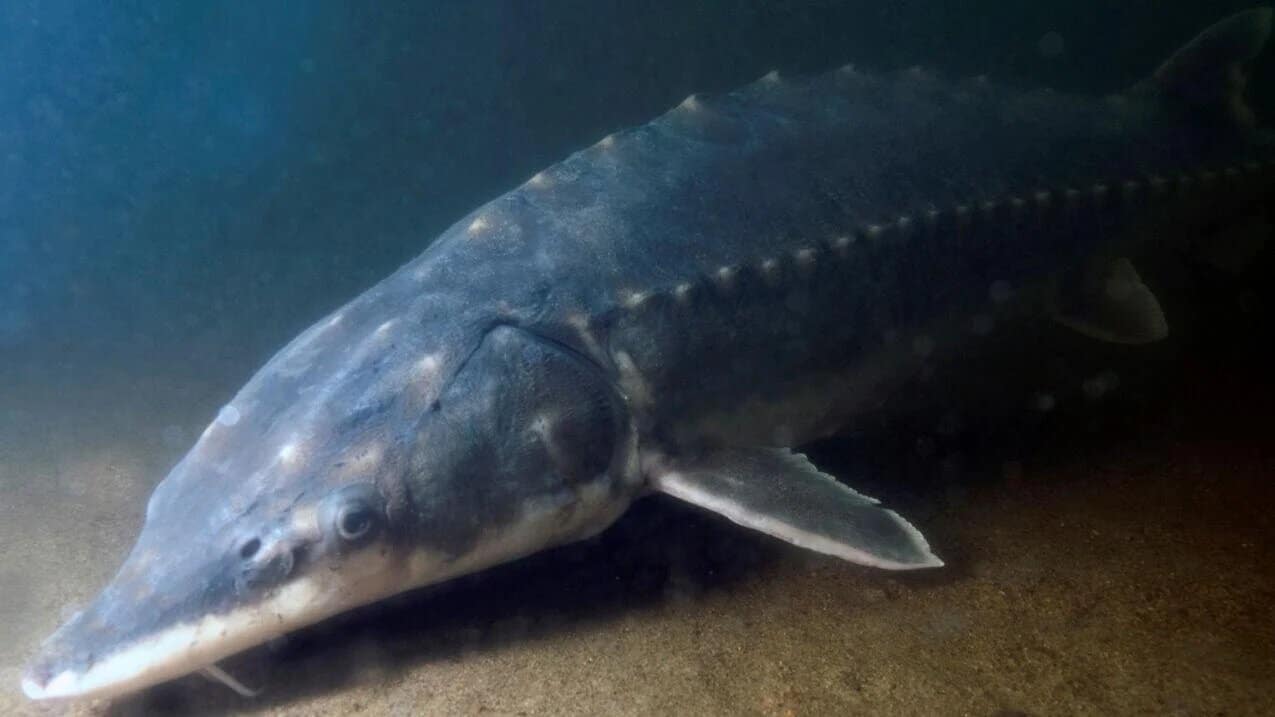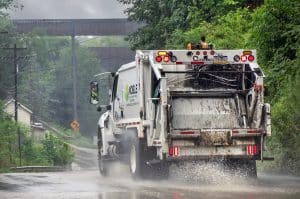In the age of modern technology, modern science, and modern media coverage, would you believe that there are still dinosaurs roaming the planet? Well, not exactly dinosaurs– because these fossils are still living. Crocodiles, Komodo dragons, and horseshoe crabs are all examples of ancient species that have persisted for hundreds of millions of years. But we have our own prehistoric creature swimming right here in our Delaware River– the Atlantic Sturgeon. These Dinos in The Delaware, as we call them, need your help.
Having outlived the dinosaurs, Atlantic Sturgeon are known for their resilience and survivability. But due to human-driven environmental threats they are now on the verge of extinction.
In the late 1800s, the Delaware River was host to the world’s largest and most flourishing population of Atlantic Sturgeon. During this prime, it is estimated that there were over 180,000 female Sturgeon in the Delaware River. As a result of the abundance of the fish, the tidal Delaware River & Bay region was named the Caviar Capital of North America and over 36 million pounds of Sturgeon were harvested from 1880-1889. Severe overfishing led to a collapse of the population, and much later, the Atlantic States Marine Fisheries Council enacted a long-overdue fishing moratorium in 1998 as the species was nearly driven to extinction from the caviar and commercial harvest.
In 2012, the Atlantic Sturgeon was listed under the Endangered Species Act and categorized into five distinct population segments (DPS) including the New York Bight DPS, Chesapeake Bay DPS, Carolina DPS, and Southern Atlantic DPS (all listed as endangered), and the Gulf of Maine DPS (listed as threatened). The New York Bight DPS includes Atlantic Sturgeon from both the Delaware River and Hudson River. However, the Delaware River population is genetically unique and isolated from the Hudson River population, making our Delaware River fish unique from any other population of Sturgeon in the world. And since Sturgeon are anadromous, these special creatures will faithfully return home to the Delaware River from the sea for spawning.
Though the Atlantic Sturgeon are no longer commercially fished in the Delaware River, there are dozens of new anthropogenic hazards they face, such as water pollution, habitat degradation, ship strikes, entrainment and impingement on industrial intakes and river deepening machinery, and climate change. It is estimated that there are less than 250 spawning adults returning every year to the Delaware River, and many of these remaining few are killed in nets and by vessel propellers, further pushing our Delaware River population closer to extinction.
A little known, but absolutely critical threat to the Sturgeon are the low dissolved oxygen levels in the Delaware River. Fish, just like humans, require oxygen to breathe. However, increasing water temperatures and poor water quality due to pollution and contamination have led to lethally low dissolved oxygen levels in essential Atlantic Sturgeon spawning and rearing habitats in the Delaware River. Can you imagine being barely able to catch your breath every single day? That is the horror Atlantic Sturgeon of our Delaware River, particularly newly hatched baby Sturgeon, are experiencing as you read this.
READ: The Green Amendment Movement Can Help Prevent Wildfires and Other Climate Disasters
The Delaware River Basin Commission (DRBC) has the legal authority to put Water Quality Standards in effect for the Delaware River which could upgrade the dissolved oxygen criteria and protect this critically endangered species. However, decades of DRBC inaction required other organizations to step up and demand better for the Sturgeon. In April of 2022, Delaware Riverkeeper Network and partners filed a rulemaking petition pursuant to the Administrative Procedure Act and Clean Water Act urging the United States Environmental Protection Agency (EPA) to promptly initiate rulemaking necessary to protect the aquatic life in the Delaware Estuary, including Atlantic Sturgeon. Essentially, the groups were asking the EPA to act where DRBC had failed to do so.
In a rarely seen and groundbreaking action, the EPA issued an Administrator’s Determination in response to the petition, finding that the current Water Quality Standards were not adequate to protect aquatic life and that revised standards were necessary to satisfy the requirements of the Clean Water Act. One year later, EPA proposed more stringent dissolved oxygen criteria as part of proposed regulations to revise the Water Quality Standards for the Delaware Estuary from Philadelphia to Wilmington. After the publication and a public comment period, it was expected that the rule would be finalized and put into effect by May 2024.
Unfortunately, to the detriment of our Sturgeon, government agencies once again dragged their feet and no final rulemaking was promulgated. That prompted Delaware Riverkeeper Network to take legal action yet again, and on October 2, 2024, we filed a lawsuit against the EPA for violating the Clean Water Act by failing to finalize the dissolved oxygen standards by the statutory deadline.

Delaware Riverkeeper Network and the EPA agreed to a proposed consent decree affirming the EPA Administrator will sign a final rule putting in effect revised water quality standards for the Delaware River Estuary by or before June 30, 2025. The final rule could be game-changing for the Atlantic Sturgeon of the Delaware River, who have been inching closer and closer to extinction over the past century.
Now more than ever, the Sturgeon need your voice. Consider submitting a comment in support of the proposed consent decree, which would hold the EPA to this critical deadline. You can include anything about the Delaware River Atlantic Sturgeon’s story that inspired you, share your own experience with the prehistoric fish, and explain why you care about preserving this species for generations to come. For more details on how to submit a comment, visit Delaware Riverkeeper Network’s website: https://delawareriverkeeper.org/support-of-epas-consent-decree-to-protect-our-atlantic-sturgeon/
The Atlantic Sturgeon of the Delaware River are nothing short of legendary: they outlived the dinosaurs and are fighting to outlive environmental threats that worsen each day without critical protections. With our help, they can flourish once more and thrive for the next 100 million years. Stay involved at www.dinointhedelaware.org.







